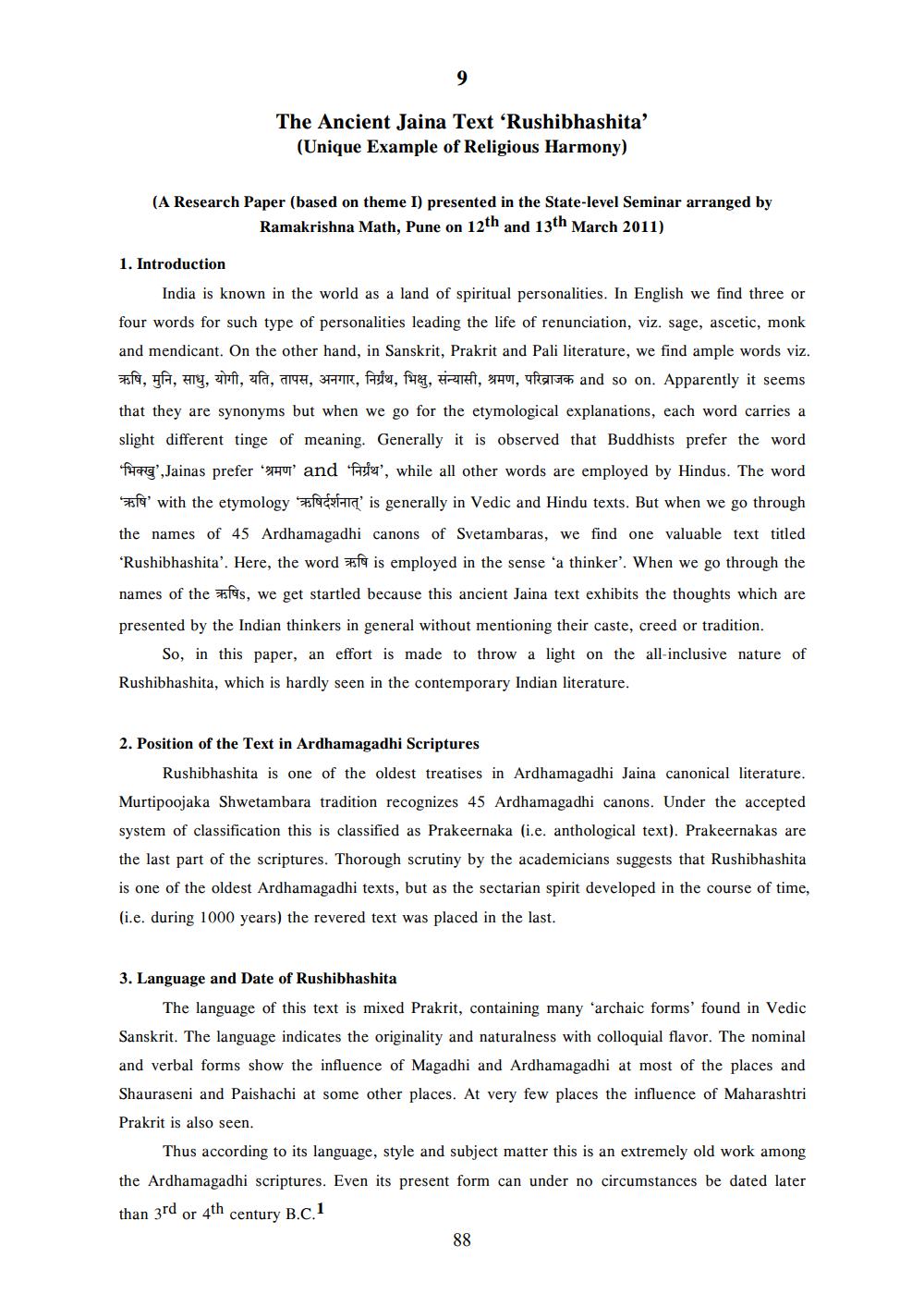________________
The Ancient Jaina Text 'Rushibhashita'
(Unique Example of Religious Harmony)
(A Research Paper (based on theme I) presented in the State-level Seminar arranged by
Ramakrishna Math, Pune on 12th and 13th March 2011)
1. Introduction
India is known in the world as a land of spiritual personalities. In English we find three or four words for such type of personalities leading the life of renunciation, viz. sage, ascetic, monk and mendicant. On the other hand, in Sanskrit, Prakrit and Pali literature, we find ample words viz. #f9, A, ATY, , afa, 7194, 317 , Party, 1424, 1, 244, ufalth and so on. Apparently it seems that they are synonyms but when we go for the etymological explanations, each word carries a slight different tinge of meaning. Generally it is observed that Buddhists prefer the word fuarg',Jainas prefer and Adfer', while all other words are employed by Hindus. The word #f' with the etymology #19CHHIL' is generally in Vedic and Hindu texts. But when we go through the names of 45 Ardhamagadhi canons of Svetambaras, we find one valuable text titled Rushibhashita'. Here, the word #fo is employed in the sense 'a thinker'. When we go through the names of the #fas, we get startled because this ancient Jaina text exhibits the thoughts which are presented by the Indian thinkers in general without mentioning their caste, creed or tradition.
So, in this paper, an effort is made to throw a light on the all-inclusive nature of Rushibhashita, which is hardly seen in the contemporary Indian literature.
2. Position of the Text in Ardhamagadhi Scriptures
Rushibhashita is one of the oldest treatises in Ardhamagadhi Jaina canonical literature. Murtipoojaka Shwetambara tradition recognizes 45 Ardhamagadhi canons. Under the accepted system of classification this is classified as Prakeernaka (i.e. anthological text). Prakeernakas are the last part of the scriptures. Thorough scrutiny by the academicians suggests that Rushibhashita is one of the oldest Ardhamagadhi texts, but as the sectarian spirit developed in the course of time, (i.e. during 1000 years) the revered text was placed in the last.
3. Language and Date of Rushibhashita
The language of this text is mixed Prakrit, containing many archaic forms' found in Vedic Sanskrit. The language indicates the originality and naturalness with colloquial flavor. The nominal and verbal forms show the influence of Magadhi and Ardhamagadhi at most of the places and Shauraseni and Paishachi at some other places. At very few places the influence of Maharashtri Prakrit is also seen.
Thus according to its language, style and subject matter this is an extremely old work among the Ardhamagadhi scriptures. Even its present form can under no circumstances be dated later than 3rd or 4th century B.C.1




